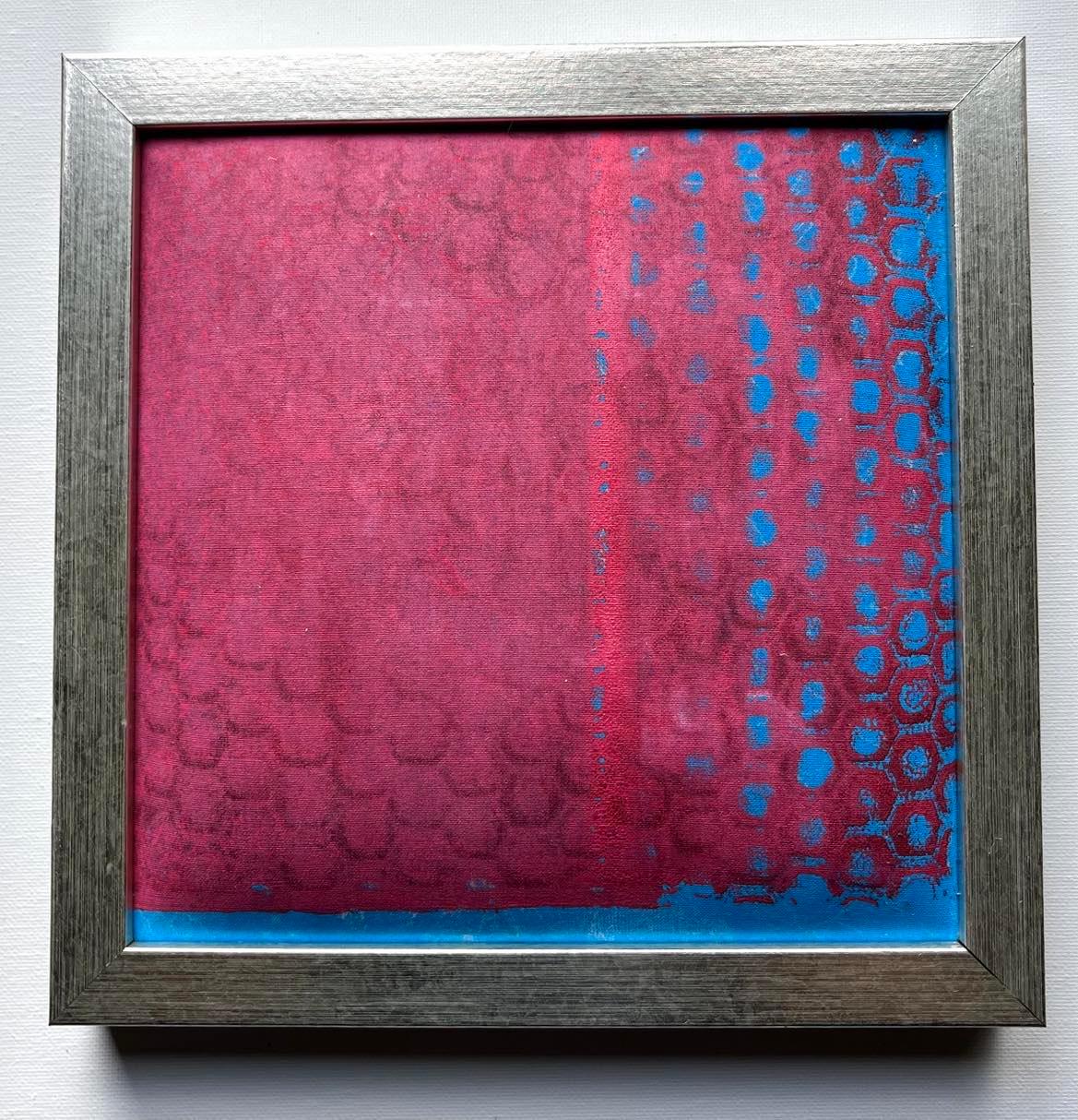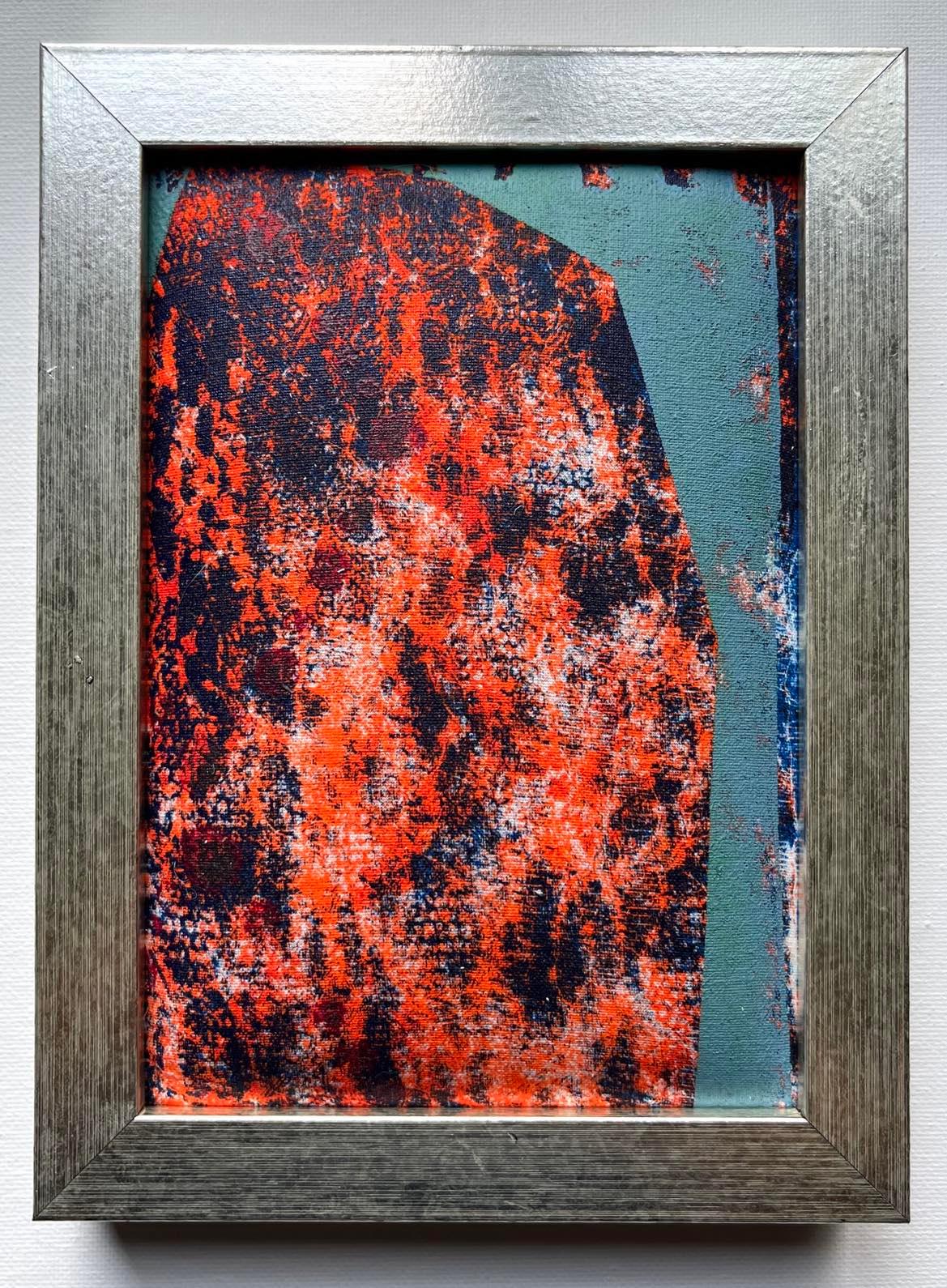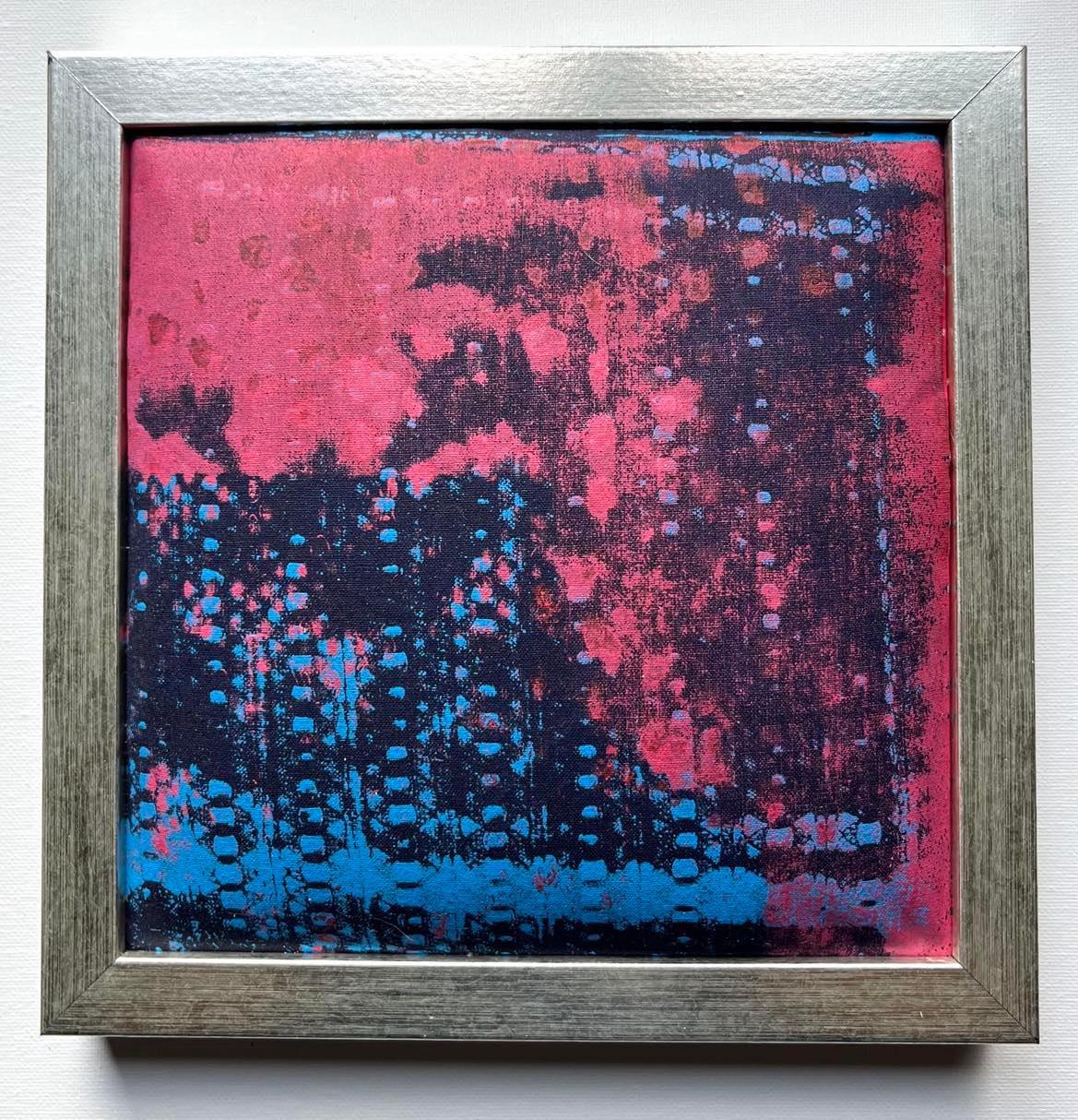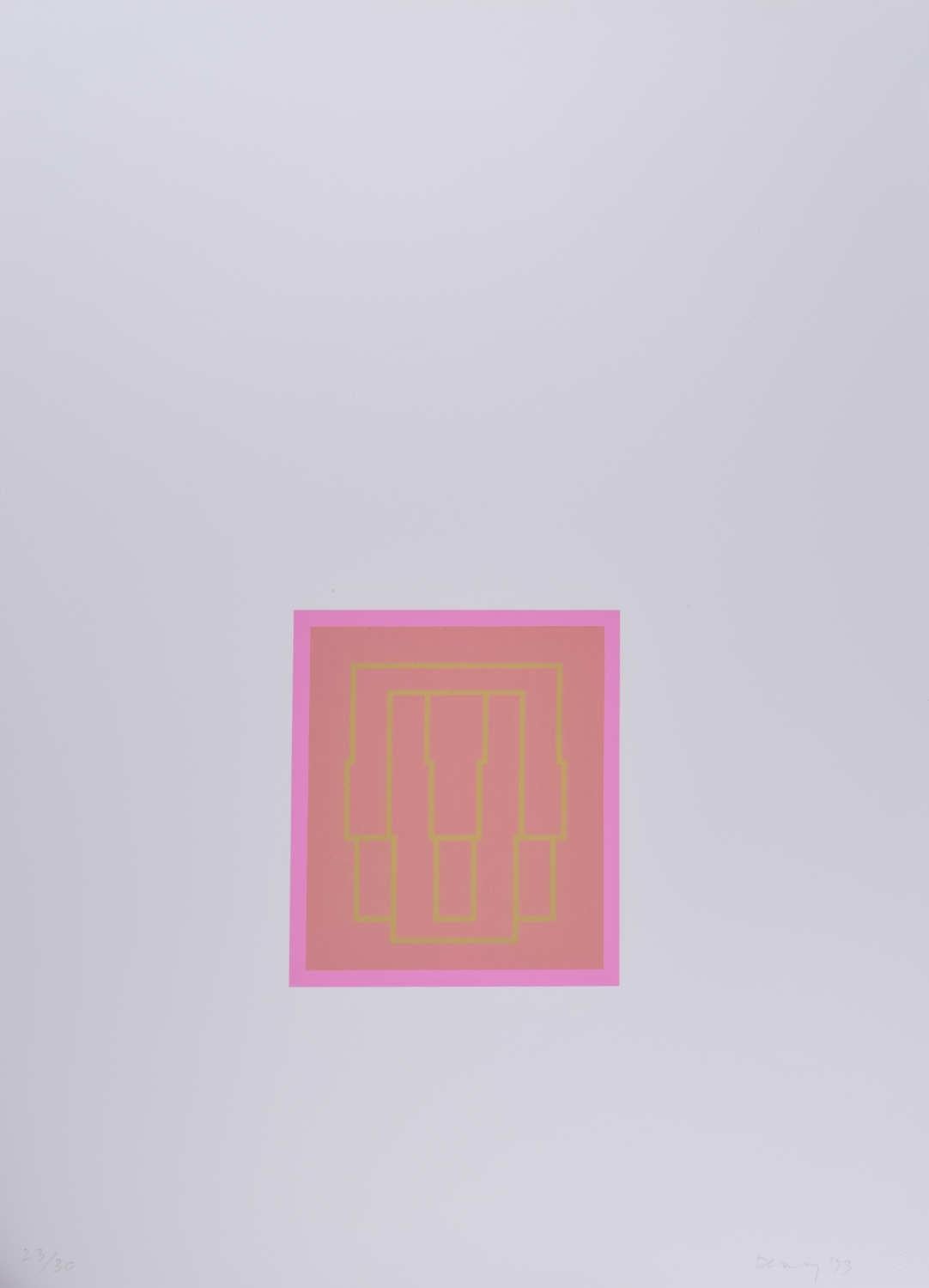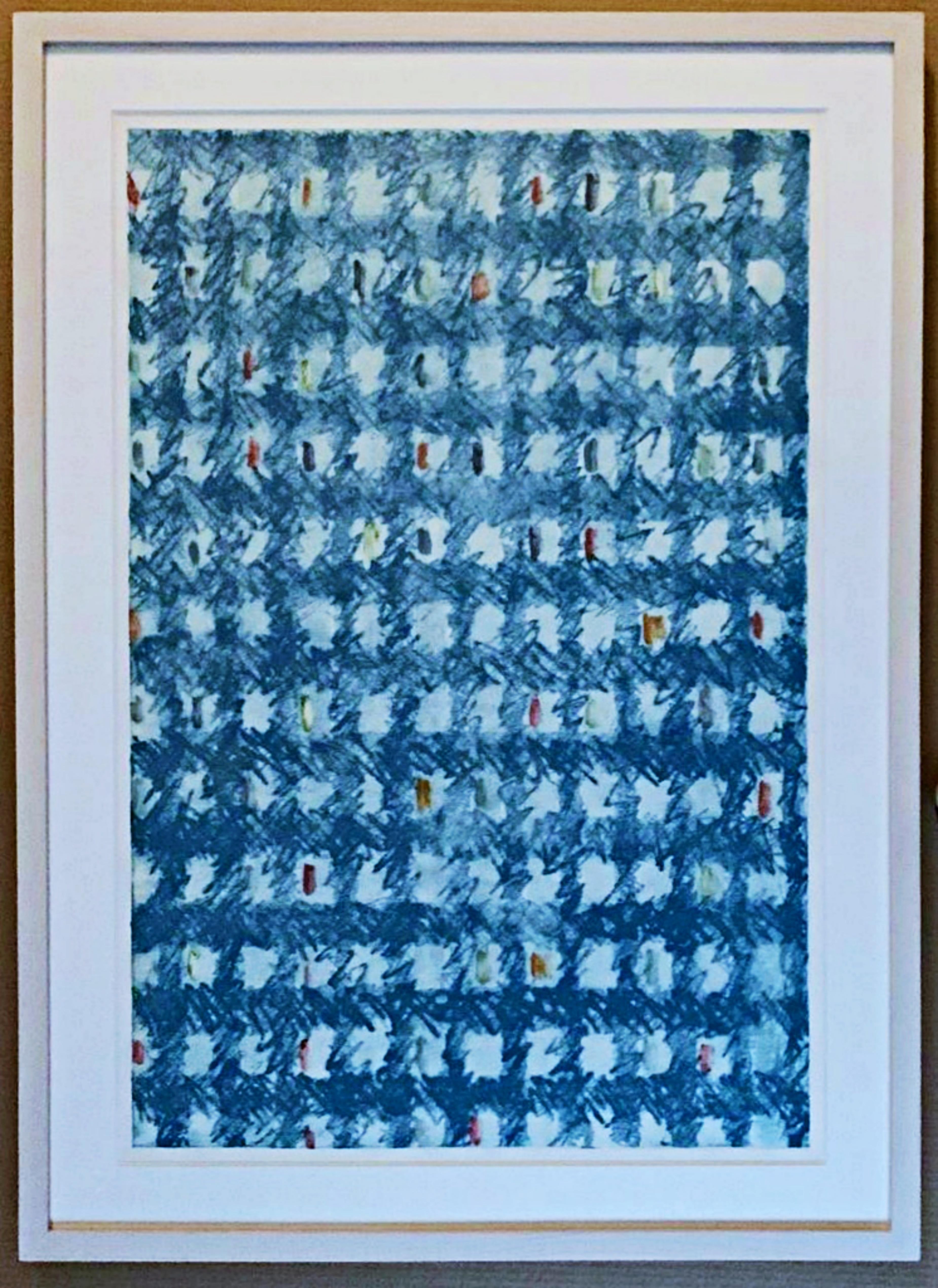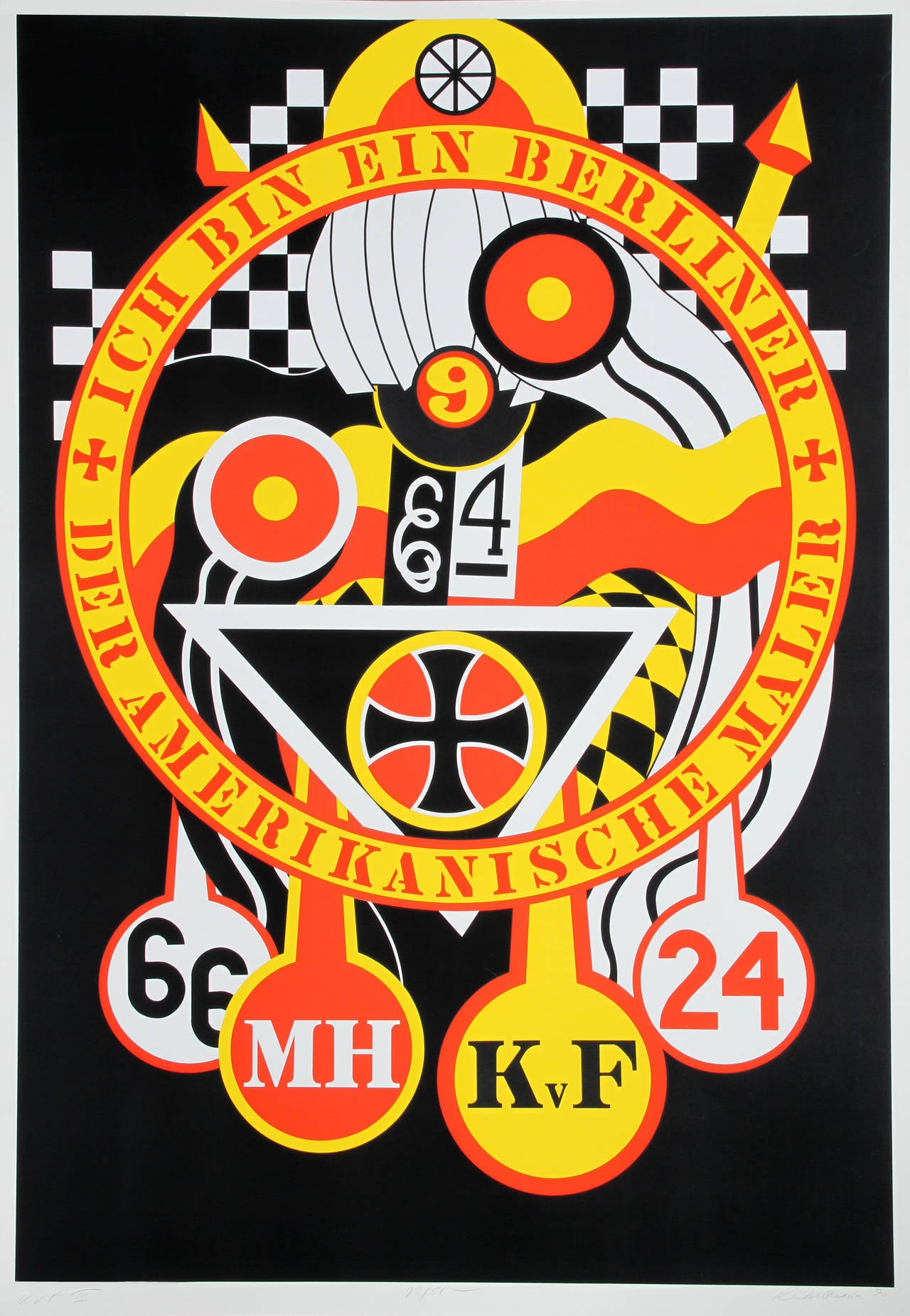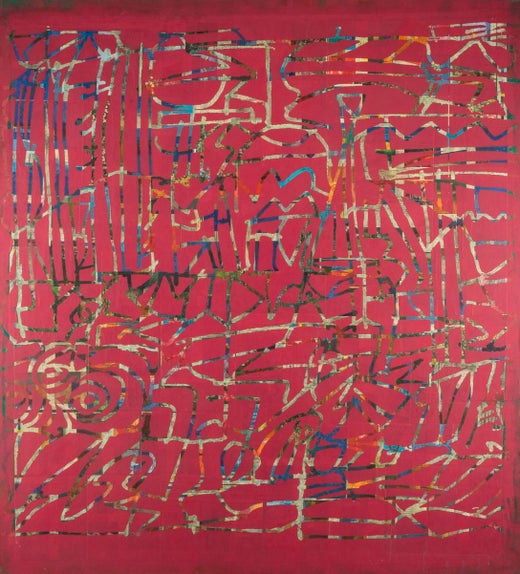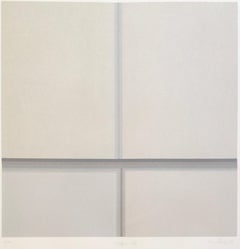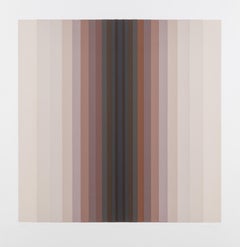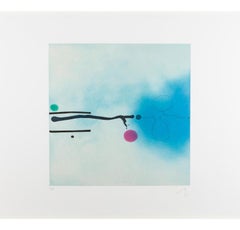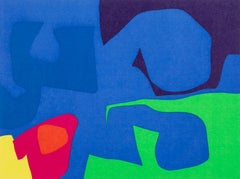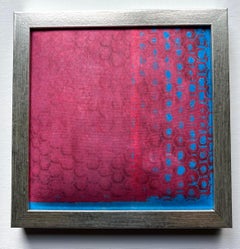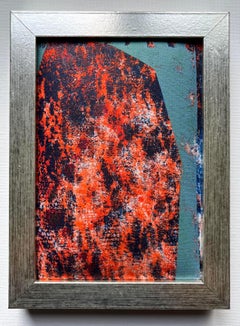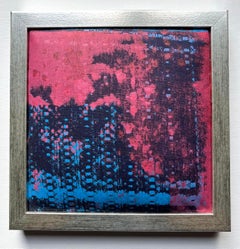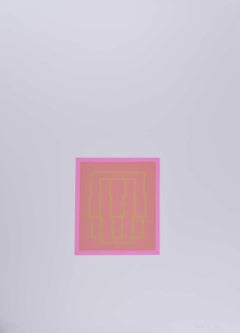Items Similar to Red Tracery, from the After Powhatan Suite, 1992 - Large Abstract Screenprint
Want more images or videos?
Request additional images or videos from the seller
1 of 5
Gordon HouseRed Tracery, from the After Powhatan Suite, 1992 - Large Abstract Screenprint1992
1992
About the Item
Gordon House was born in 1932 in Pontardawe, South Wales. Early exposure to art on trips to the Glynn Vivian Art Gallery as a young boy inspired House towards creative endeavors and at the age of fourteen he was awarded a grant to enter art school which he accepted. From 1947 to 1950 he studied at Luton School of Art, Bedfordshire, and St. Albans School of Art, Hertfordshire. House's contemporaries included Richard Smith and John Plumb with whom he remained close. During the early fifties, after finishing art school, House began work as assistant to the ecclesiastical sculptor Theodore Kern. He also spent time at an advertising studio where he honed his burgeoning skills in typography and graphic design. In 1952 House was offered the position of designer for Imperial Chemical Industries Plastics Division where he stayed until 1959. This was followed by two years spent as graphic designer for the Kynoch Press in London. In 1961 House set out on his own as a self-employed designer and typographer. Initially this was supplemented by part-time teaching at art schools in and around London but by 1964 House was able to devote himself entirely to his design work which freed up valuable time to concentrate on his own artistic output in the studio.
In the late fifties, informed by the new art emerging from America and that of his contemporaries in England, House began to create large-scale abstract works which he was invited to show in 1959 at Dennis Bowen's legendary New Vision Centre in Marble Arch.
House was an active participant in the vibrant London art scene of the sixties, regularly attending lectures, exhibitions and discussions. In 1960 he exhibited in 'Situation' the key abstract exhibition of the decade held at the RBA Galleries. Other participating artists included Robyn Denny, Bernard and Harold Cohen, Gillian Ayres, John Hoyland, Richard Smith and William Turnbull among others. These artists, united by a common admiration for American Abstract Expressionism, were frustrated by the lack of exposure given to large-scale abstract works in commercial galleries so they organised their own exhibition. The name was derived from the participants' idea that an abstract painting that occupied the whole field of vision would involve the spectator in an 'event' or 'situation'. This exhibition was followed by 'New London Situation' in 1961 and a nationwide touring Arts Council presentation in recognition of the significance of the two earlier shows.
In 1961 House began producing his first prints at the Kelpra Studio, run by Chris and Rose Prater, where he made the earliest fine art screenprint ever to be produced in Britain. Artists such as Paolozzi and Hamilton followed in his footsteps and together they started a printmaking revolution in Britain. They cemented the medium of the screenprint in the world of fine art as opposed to the commercial sphere and secured the reputation of Kelpra in the process. Later, together with Cliff White, House set up the White Ink (Ltd.) print studio in London, where he produced etchings and wood engravings on a series of magnificent antique printing presses he had collected. White Ink soon gained a reputation for innovative and high quality printmaking, attracting artists such as R. B. Kitaj, Richard Smith, Joe Tilson, Sidney Nolan, Victor Pasmore, Eduardo Paolozzi, Bernard Cohen and Elizabeth Frink.
Printmaking was to remain a key part of House's oeuvre throughout the rest of his career, whether in the medium of screenprint, etching, woodcut, linocut or lithograph. In 1981 a retrospective exhibition of his graphic works opened at the Carnegie Institute, Pittsburgh, and in 1982 this travelled to the Brooklyn Museum, New York. These shows were instrumental in bringing House's prints to the attention of a wider American audience.
- Creator:Gordon House (1932, British)
- Creation Year:1992
- Dimensions:Height: 40.01 in (101.6 cm)Width: 28 in (71.1 cm)
- Medium:
- Period:
- Condition:
- Gallery Location:Kingsclere, GB
- Reference Number:1stDibs: LU2718215411252
Gordon House
The Guardian wrote of Gordon House, upon his death in 2004: Many of the works made during his last years by the painter and graphic designer Gordon House, who has died aged 71, referred back to his birthplace in the Swansea valley. He spent his earliest years in the steel town of Pontardawe. In Tin-pan Valley, the memoir he published earlier this year, he recalled "the clamour of steel mills ... the tinplate works and pithead gear" and "dynamite blasting as coal seams were struck higher up the valley". Unemployment and the depression of the 1930s led Gordon's parents to take him from the valleys of south Wales to the order and designed coherence of Letchworth, "Hertfordshire's first garden city". After leaving school at 14, he went to study, first, at Luton School of Art. For a while after that, he worked in a hospital, before, with the aid of a scholarship, moving on to St Albans School of Art. By 1961, Gordon had become established among a new generation of artists as an independently minded and adventurous painter and designer. The previous year, he had shown his large, bold, hard-edged canvasses at the important London "Situation" exhibition of large-scale abstract painting, and had designed the catalogue for that exhibition. As the 1960s moved on, Gordon designed for the pop world. He worked for the Beatles, designing their White album and the back of the Sergeant Pepper album, for which his longtime friend Peter Blake designed the front. Later, he designed Wings' first album. He delighted in the creative energy of others, and so could respond to the talents of musicians and artists alike. Gordon made paintings throughout his life as a designer. During the 1960s and 70s, his canvasses and prints reflected the dramatic tensions of his graphic design; by the 1980s, Wales had become his constant subject matter. The surface, texture and colour of his paintings softened. No doubt, he needed to pay homage to the places and the people who had shaped him, just as he always paid homage to the artists for whom he designed. His canvasses reduced in size, becoming palm-of-the-hand landscapes. He spent much time in Wales and, in his final years, he used his brush to walk a path through memories of collieries, valleys, smoking stacks, rows of cottages and the people who had first nurtured him.
About the Seller
No Reviews Yet
Vetted Professional Seller
Every seller passes strict standards for authenticity and reliability
1stDibs seller since 2024
36 sales on 1stDibs
Typical response time: 11 hours
- ShippingRetrieving quote...Shipping from: Kingsclere, United Kingdom
- Return Policy
Authenticity Guarantee
In the unlikely event there’s an issue with an item’s authenticity, contact us within 1 year for a full refund. DetailsMoney-Back Guarantee
If your item is not as described, is damaged in transit, or does not arrive, contact us within 7 days for a full refund. Details24-Hour Cancellation
You have a 24-hour grace period in which to reconsider your purchase, with no questions asked.Vetted Professional Sellers
Our world-class sellers must adhere to strict standards for service and quality, maintaining the integrity of our listings.Price-Match Guarantee
If you find that a seller listed the same item for a lower price elsewhere, we’ll match it.Trusted Global Delivery
Our best-in-class carrier network provides specialized shipping options worldwide, including custom delivery.More From This Seller
View AllAdytum S III, Neutral Tone Linear Abstract Screen Print, 1974
By Paul Feiler
Located in Kingsclere, GB
Adytum S III, 1974
signed, dated, titled and numbered 13/75 in pencil
screenprint in colours on wove
31 1/8 x 23 1/4 in
79 x 59 cm
Category
20th Century Prints and Multiples
Materials
Screen
Adytum S II - Tonal Abstract Stripes with White and Brown Screenprint, 1973
By Paul Feiler
Located in Kingsclere, GB
Adytum S II, 1973
signed, dated, titled and numbered in pencil
screenprint
31 1/2 x 22 7/8 in
80 x 58 cm
Category
20th Century Prints and Multiples
Materials
Screen
Blue Image, 1980s Abstract Screenprint by Victor Pasmore, Framed and Glazed
By Victor Pasmore
Located in Kingsclere, GB
Blue Image by Victor Pasmore, 1986
Additional information:
Medium: screenprint on Fabriano paper
49 x 48.5 cm
19 1/4 x 19 1/8 in
signed, dated and numbered 68/90 in pencil
Victor P...
Category
20th Century Abstract Prints
Materials
Screen
January 1973 : 19 (DRU Christmas Card), 1976 - Abstract Colourful Screenprint
By Patrick Heron
Located in Kingsclere, GB
This screenprint was commissioned by the Design Research Unit as their Christmas card for 1976. It is a reinterpretation of Patrick Heron’s 1973 screenprint 'JANUARY 1973 : 19'.
Pat...
Category
Late 20th Century Abstract Prints
Materials
Screen
Spoilt for Choice, 1998 - Large Monochrome Abstract Screen Print, 20th Century
By Basil Beattie
Located in Kingsclere, GB
English painter and printmaker. He studied at West Hartlepool College of Art (1950-55) and at the Royal Academy Schools, London. He taught at Goldsmiths College, London, for much of ...
Category
Late 20th Century Abstract Prints
Materials
Screen
Betwixt and Between by John Hoyland, 1982
By John Hoyland
Located in Kingsclere, GB
Betwixt and Between by John Hoyland, 1982
Additional information:
Medium: screenprint
55 1/2 x 40 7/8 in
141 x 103.8 cm
signed and dated in pencil
Category
20th Century Abstract Prints
Materials
Screen
You May Also Like
Pink Wash
Located in Columbia, MO
Pink Wash
Screenprint on Fabric
Category
21st Century and Contemporary Abstract Abstract Prints
Materials
Fabric, Screen
Orange Mesa
Located in Columbia, MO
Orange Mesa
Screenprint on Fabric
Category
21st Century and Contemporary Abstract Abstract Prints
Materials
Fabric, Screen
Pink Fog
Located in Columbia, MO
Pink Fog
Screenprint on Fabric
Category
21st Century and Contemporary Abstract Abstract Prints
Materials
Fabric, Screen
Portrait Series A (5), screenprint by Robyn Denny
By Robyn Denny
Located in London, GB
Robyn Denny (1930-2014)
Portrait Series A (5)
Screenprint
80 x 58 cm
Signed to the bottom right and blind stamped
Numbered 23/30
‘No painting should reveal all it has to say ...
Category
1970s Abstract Abstract Prints
Materials
Screen
Monotype w/hand painting, geometric art famed color field painter, signed Framed
By Kenneth Noland
Located in New York, NY
Kenneth Noland
Untitled, 1987
Monotype with hand painting on wove paper
Hand signed and dated with artist's copyright in pencil on the back; also with the blind stamp/chop mark lower...
Category
1980s Color-Field Abstract Prints
Materials
Acrylic, Monotype, Screen
The Hartley Elegies: The Berlin Series - KvF III, Large Print by Robert Indiana
By Robert Indiana
Located in Long Island City, NY
Artist: Robert Indiana
Title: The Hartley Elegies: The Berlin Series - KvF III
Year: 1990
Medium: Serigraph on Saunders Watercolor paper, signed and numbered in pencil
Edition: 50 ...
Category
1990s Pop Art Abstract Prints
Materials
Screen
